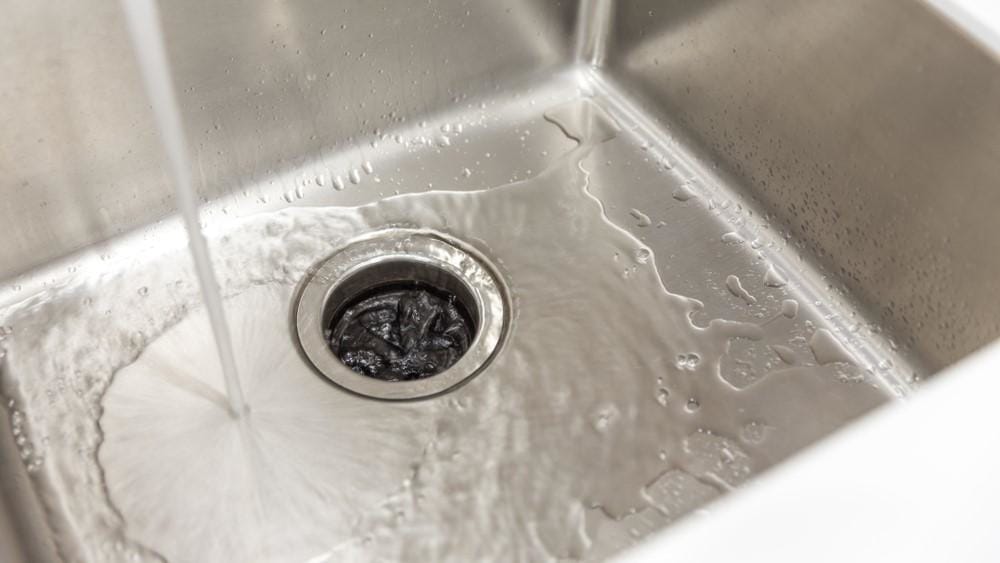
Deep Clean For Your Garbage Disposal
Most of us never ponder how necessary a garbage-disposal is in maintaining a healthy kitchen. We take them for granted, and it seems without one, it's common knowledge that you're going to experience regular plumbing issues. However, did you know that many cities banned them, including all of New York City? They were concerned that food waste would damage the sewage lines until 1997 after the city conducted a 21-month study. Decomposing food rotting in landfills emits methane gas, which contributes to the greenhouse effect. Now, authorities in Britain offer subsidies to encourage residents to cut down on food waste entering landfills.
Food waste accounts for 10 to 20 percent of household waste. Therefore, we should toss strawberries leaves, grape stems, asparagus ends, and yellowing arugula down the disposal. Our Powerizer team is now encouraged to be more diligent about grinding food scraps instead of tossing them in the trash. It's an easy adjustment to make to reduce your carbon footprint further. Urban gardeners who regularly compost recommend blending these food scraps and then pouring the liquid into the soil. Now that the garbage disposal is celebrated and encouraged lets discuss taking care of it.
Anytime a deep clean is mentioned, most automatically assume the process is complicated. However, Powerizer Complete is one product that saves you time and money, and is all you need to be your garbage disposal cleaner. Each ingredient in Powerizer is simple, made of plant and mineral-based ingredients, yet powerful enough to tackle cleaning everything dirty in the home. So, let's discuss what goes on in the garbage disposal that can cause unpleasant odors and how to avoid malfunction. We're here to offer simple steps to clean and deodorize your smelly garbage disposal using Powerizer Complete.

As briefly mentioned above, food waste decomposes and will cause a terrible odor that will emit a methane gas. It's not an odor you want floating from your kitchen sink.
- First, run water and turn on the garbage disposal to remove any food waste that may not have flushed away from the last time you used it. Once it's empty, then start the clean in-depth process.
- Add 20 to 30 large ice cubes down the drain. Hydrogen Peroxide is one of two ingredients that make up Sodium Percarbonate; it actives with water. Hydrogen Peroxide is an oxygen bleach ingredient, safer choice bleach in Powerizer. Hydrogen Peroxide mixed in temperatures below 104 degrees F is less effective. Therefore, TAED, short for Tetraacetylethylenediamine, is an essential ingredient in Powerizer, which supercharges Hydrogen Peroxide. Now you have a super-effective oxidizing agent that works not only in hot wash cycles but also in cold-water temperatures. Powerizer quickly neutralizes odors and effectively cleans the grinding plate and the food chamber. Adding ice to drain helps to sharpen the blades during the grinding process.
- Add one (1) scoop of Powerizer down the drain. The paste will attach to the ice and lengthen the time it takes to move throughout the entire chamber until it eventually makes its way down the sewer drainage pipe.
- Pulsate the disposal by flipping the switch on and off a few times. The spin action helps to distribute the paste equally throughout the grinding plate.
- Finally, plug the kitchen sink drain, then add boiling water unless your faucet can heat up to a near scalding temperature. The plant-based Surfactant coats all the surfaces to list and isolate dirt and grease. Meanwhile, the plant-based enzymes attach to starch and protein so that everything rinses away with plain water. Pour in one (1) scoop of Powerizer to one (1) gallon of hot water. Make sure the detergent fully dissolves, then remove the sink stopper. Use a fork or large spoon to dislodge the stopper or put on rubber gloves to insulate your hands from the heat.
- Allow the garbage disposal to run until all the water drains from the sink.

What not to put down your garbage disposal
- Pasta, rice or starchy foods can expand in both your disposal and pipes causing them costly repairs
- Potato and cucumber skin peels will lodge under the blades and the grinding plate causing them to not work properly
- Cooking grease or oil residues which can clog pipes over time
- Large seeds or pits like peach, mango, avocado or apple cores can ruin the blades
- Raw Meat will stick to the sides mostly because of the fat content and cause bacteria to form
- Meat or fish bones or any remnants will decay and cause a terrible foul odor
- Skins of onion, selfish, corn husks, can wrap around the blade and cause it to malfunction
- Chemicals which can cause severe rust and damage septic system
- Fibrous foods like artichokes, asparagus, celery, cilantro, lettuce, rhubarb, spinach, have fibers that turn into strings that can also wrap around the blade and make it stop working. Many times, it’s too difficult to loosen them which ultimately require you to have to replace your disposal
- Non-food items like paper towel, cardboard or food wrappers can expand in both garbage disposal and pipes and cause major issues
To test how Powerizer’s powerful oxidizing agent easily removes other common odors from the kitchen. Set up an experiment using one of these pungent odors.
- Balsamic Vinaigrette - Easily breakdown oils and smells from a salad dressing bottle
- Betadine - Pre-treat a stained a fabric. Betadine has a chemically smell that can be easily vanished with Powerizer
- Coffee - Deodorize and recycle an empty coffee canister
- Herbs & Spice - Recycle glass spice jars. Deodorize garlic, onion, cinnamon jars by soaking them.
- Thirdhand Cigarette Smoke - Remove cigarette smoke easily from fabrics by doing a Laundry Stripping soak
- Cutting Boards - Freshen cutting boards from odors and tough stains
